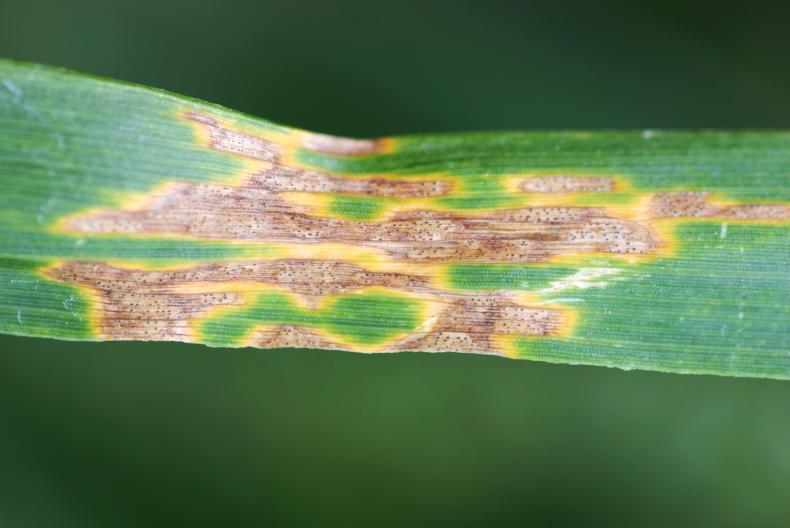A consortium of researchers from the University of Exeter have discovered a novel means of protecting crops against pathogenic fungi such as septoria.
In a recent publication, they report the identification of novel mono-alkyl chain lipophilic cations (MALCs) which are effective in the protection of crops against Septoria tritici in wheat and rice blast disease.
Both these diseases challenge temperate-grown wheat and rice and so jeopardise the security of two of the world’s most important calorie crops.
Discovery
The report outlines how researcher’s journey began with the discovery that MALCs inhibit the activity of fungal mitochondria.
Mitochondria are the cellular power-house required to provide the fuel for all essential processes in the pathogen.
By inhibiting an essential pathway in mitochondria, MALCs cut down the cellular energy supply, which eventually kills the pathogen.
Unexpected results
While the researchers were able to show that this mode of action was common to the various MALCs tested and effective against plant pathogenic fungi, one MALC that they synthesised and named C18-SMe2+ showed unexpected additional modes of action.
Firstly, C18-SMe2+ generated aggressive molecules inside the mitochondria, which target life-essential fungal proteins and in turn initiated a self-destruction programme. This ultimately resulted in the death of the fungus.

Zymoseptoria tritici, the cause of Septoria tritici in wheat, treated with C18-SMe2+. \ University of Exeter
Secondly, when applied to crops, C18-SMe2+ alerted the plant's defence system, which prepared the crop for subsequent attack, thereby increasing the armoury of the plant against the intruder.
Finally, the Exeter researchers demonstrated that C18-SMe2+ showed no toxicity to plants. They also stated that it is less toxic to aquatic organisms and human cells than existing fungicides sprayed in the field today.
The university has filed a patent (GB 1904744.8) in recognition of the potential of this novel chemistry in our perpetual fight against fungi.
A consortium of researchers from the University of Exeter have discovered a novel means of protecting crops against pathogenic fungi such as septoria.
In a recent publication, they report the identification of novel mono-alkyl chain lipophilic cations (MALCs) which are effective in the protection of crops against Septoria tritici in wheat and rice blast disease.
Both these diseases challenge temperate-grown wheat and rice and so jeopardise the security of two of the world’s most important calorie crops.
Discovery
The report outlines how researcher’s journey began with the discovery that MALCs inhibit the activity of fungal mitochondria.
Mitochondria are the cellular power-house required to provide the fuel for all essential processes in the pathogen.
By inhibiting an essential pathway in mitochondria, MALCs cut down the cellular energy supply, which eventually kills the pathogen.
Unexpected results
While the researchers were able to show that this mode of action was common to the various MALCs tested and effective against plant pathogenic fungi, one MALC that they synthesised and named C18-SMe2+ showed unexpected additional modes of action.
Firstly, C18-SMe2+ generated aggressive molecules inside the mitochondria, which target life-essential fungal proteins and in turn initiated a self-destruction programme. This ultimately resulted in the death of the fungus.

Zymoseptoria tritici, the cause of Septoria tritici in wheat, treated with C18-SMe2+. \ University of Exeter
Secondly, when applied to crops, C18-SMe2+ alerted the plant's defence system, which prepared the crop for subsequent attack, thereby increasing the armoury of the plant against the intruder.
Finally, the Exeter researchers demonstrated that C18-SMe2+ showed no toxicity to plants. They also stated that it is less toxic to aquatic organisms and human cells than existing fungicides sprayed in the field today.
The university has filed a patent (GB 1904744.8) in recognition of the potential of this novel chemistry in our perpetual fight against fungi.







 This is a subscriber-only article
This is a subscriber-only article










SHARING OPTIONS: